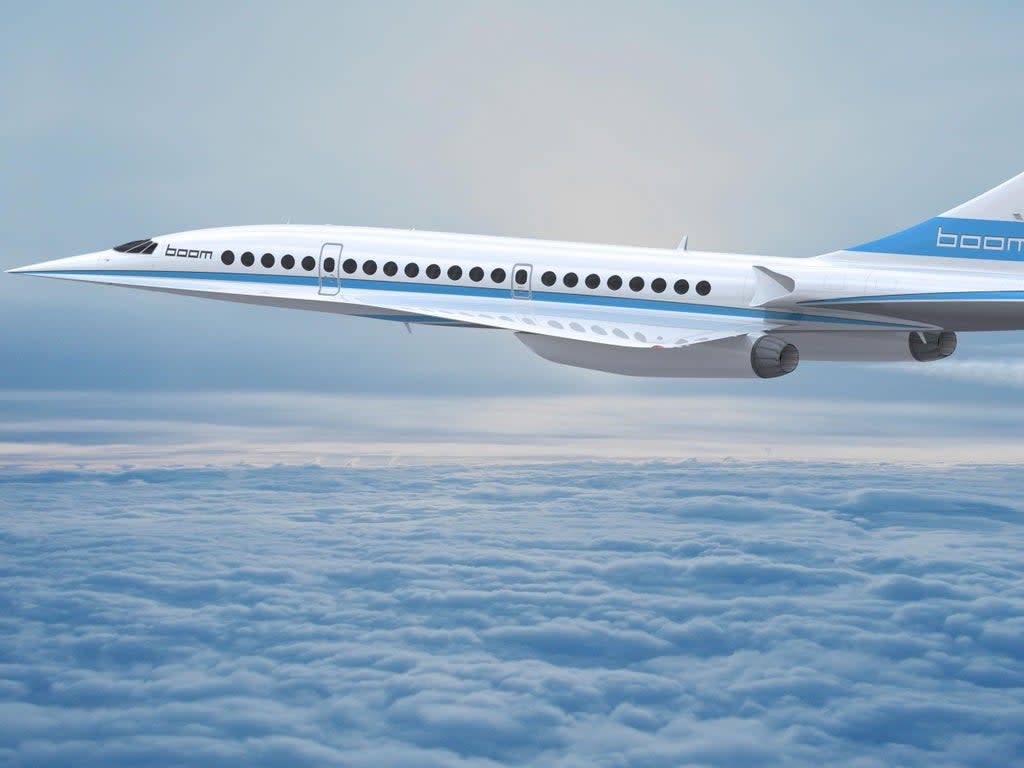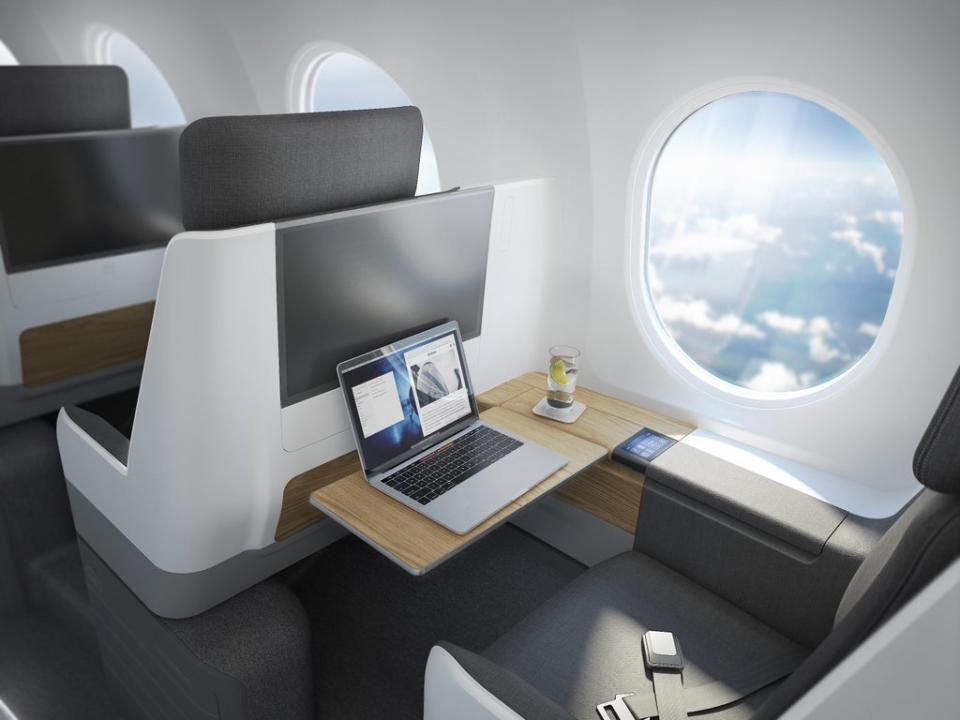Supersonic airliner gets $60m funding from US military

The US Air Force has granted $60 million towards the development of a supersonic airliner capable of flying more than 2,000kph (1,300mph).
Boom Supersonic, based in Colorado, hopes to begin commercial operations of its next-generation Overture aircraft before 2030, with the first flight expected to take place in 2026.
The three-year partnership with the US military is aimed at accelerating the plane’s development and making sure the supersonic venture has the funding to make it off the ground.
“We are proud of the Air Force’s continued support and recognition of Boom’s leadership in supersonic flight – and we see our partnership as mutually beneficial,” said Boom Supersonic founder and CEO Blake Scholl.
“As a potential future platform for the Air Force, Overture would offer the valuable advantage of time, an unmatched option domestically and internationally.”
The Overture craft is designed to carry between 65 and 88 passengers at twice the speed of today’s airlines, and almost 160kph faster than Concorde.
This would allow journey times between London and New York to be cut in half, down to 3.5 hours.

United Airlines announced plans last year to buy 15 of the supersonic planes, describing Overture as “a leap forward in returning supersonic speeds to aviation”.
Concorde, which flew in British Airways and Air France fleets, was the last commercial supersonic jet, operational between 1976 and 2003.
United Airlines said future routes could include Newark to London, Newark to Frankfurt, and San Francisco to Tokyo. The noise created by the sonic boom means that, like Concore, all routes will likely be trans-oceanic.
Other efforts to build supersonic passenger planes include Boeing’s 2707 craft, which received 122 orders from 26 airlines before the project was eventually cancelled.

